From the Tree to the Street: The Story of Natural Rubber
Natural rubber is a component of many of our everyday products, such as tyres, shoes, latex gloves and mattresses. However, while demand and value creation are largely concentrated in industrialised countries, the raw material is produced almost exclusively in the Global South – primarily in Southeast Asia, but also in Latin America and Africa. Because of its unique properties, natural rubber is unrivalled - even compared to synthetic rubber or other plant-based alternatives.
However, the rubber market has been under threat for decades: hard physical labour, inconsistent incomes, inefficient rubber harvesting methods and the loss of regional biodiversity due to deforestation are leading to a decline in the number of rubber producers. The supply chains are often long and non-transparent due to their many stages. A call to action: More and more initiatives and producers are working to create deforestation-free farming regions and train smallholders in sustainable farming methods.
This is also the case in Colombia, where the shoe manufacturer "Cueros Vélez" uses soles made from sustainably produced natural rubber in its shoes. The photo gallery shows how the latex extracted from the rubber tree becomes a reliable companion on our roads.
Let's take a look at the beginning of the Natural Rubber Supply Chain.
The extraction of latex from the natural rubber tree is done through the process of scraping the tree. This is a native tree species to the Colombian Amazon that was established as a crop by rural families and can be considered a productive forest. The latex extracted from the natural rubber tree is coagulated by hand by rural families.
From the Tree to the Street
On the way to transparent supply chains in the natural rubber sector, the INCAS Global+ (Innovation in Sustainable Agricultural Supply Chains) project is helping to coordinate between the individual links in the chain. This project not only works in the natural rubber supply chain, but also in the coffee, cocoa, palm oil and banana supply chains. It has had an impact on more than 9,000 productive farms in the areas of regenerative agriculture, biodiversity, sustainable trade, inclusion of women and young people, innovation, EUDR, climate change and improved working conditions.
“This articulation and strengthening of the chain have allowed us to increase our exports, businesses and marketing at national and international Levels as well as the recognition of the chain's Stakeholders their strengths and needs, which they can address together.”
said Fernando García Rubio,
Executive Director of the Colombian Rubber
Confederation and Center of Research for
Rubber Cultivation Cenicaucho.
Collection & Delivery to Emprocaucho
The coagulated latex is taken from the farm to an agro-industrial plant (Emprocaucho SAS) that belongs to the producers' association ASOHECA (Association of Natural Rubber Producers of Caquetá).
Processing & Value Addition Stage
In this agro-industrial plant the coagulated latex is collected and an agro-industrial process of washing, chopping, and drying is done to standardise and transform the raw material from latex into TSR-20 (Technically Specified Natural Rubber), which can be used for footwear, tires, industrial conveyor belts and other applications. This plant is located in the Colombian Amazon and has received support from international cooperation to achieve better profitability for producers and improvement of product quality.
Logistics & Transport of Standardised Rubber
The image shows a rubber bullet weighing between 33 and 35 kg. This product is transported to the next link in the chain.
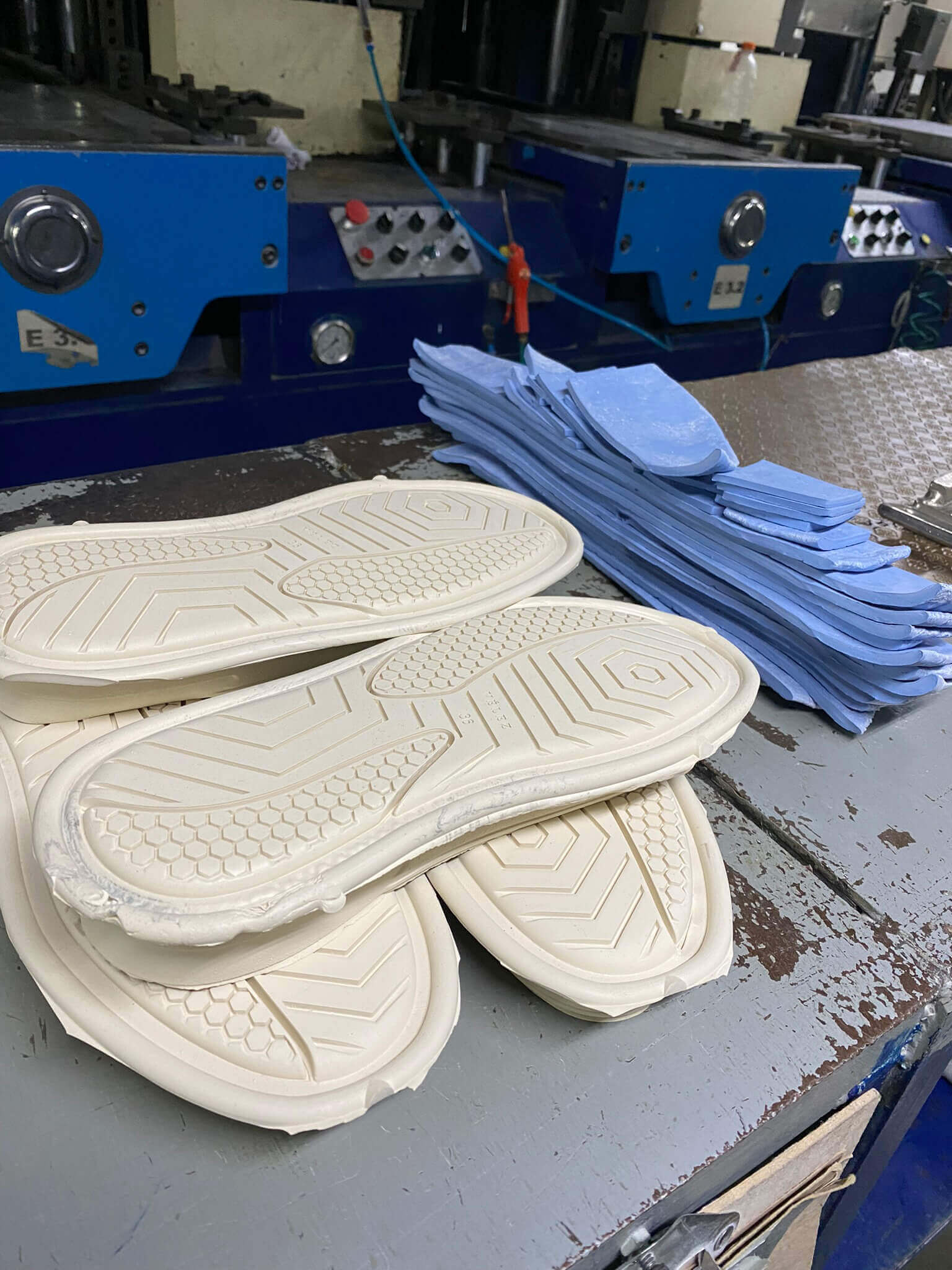
The Way of Natural Rubber
Rubber Compounding and Sole Manufacturing
TSR-20 rubber arrives at Creatum, a company that manufactures soles for the footwear industry. The rubber undergoes a mixing process where reinforcing fillers and vulcanising agents and accelerators are added. The material is then taken to the vulcanisation and pressing process, where the sole is given the shape and design required by the footwear manufacturer.
Final Product Preparation
Each sole undergoes a manual polishing and packaging process done by factory employees.
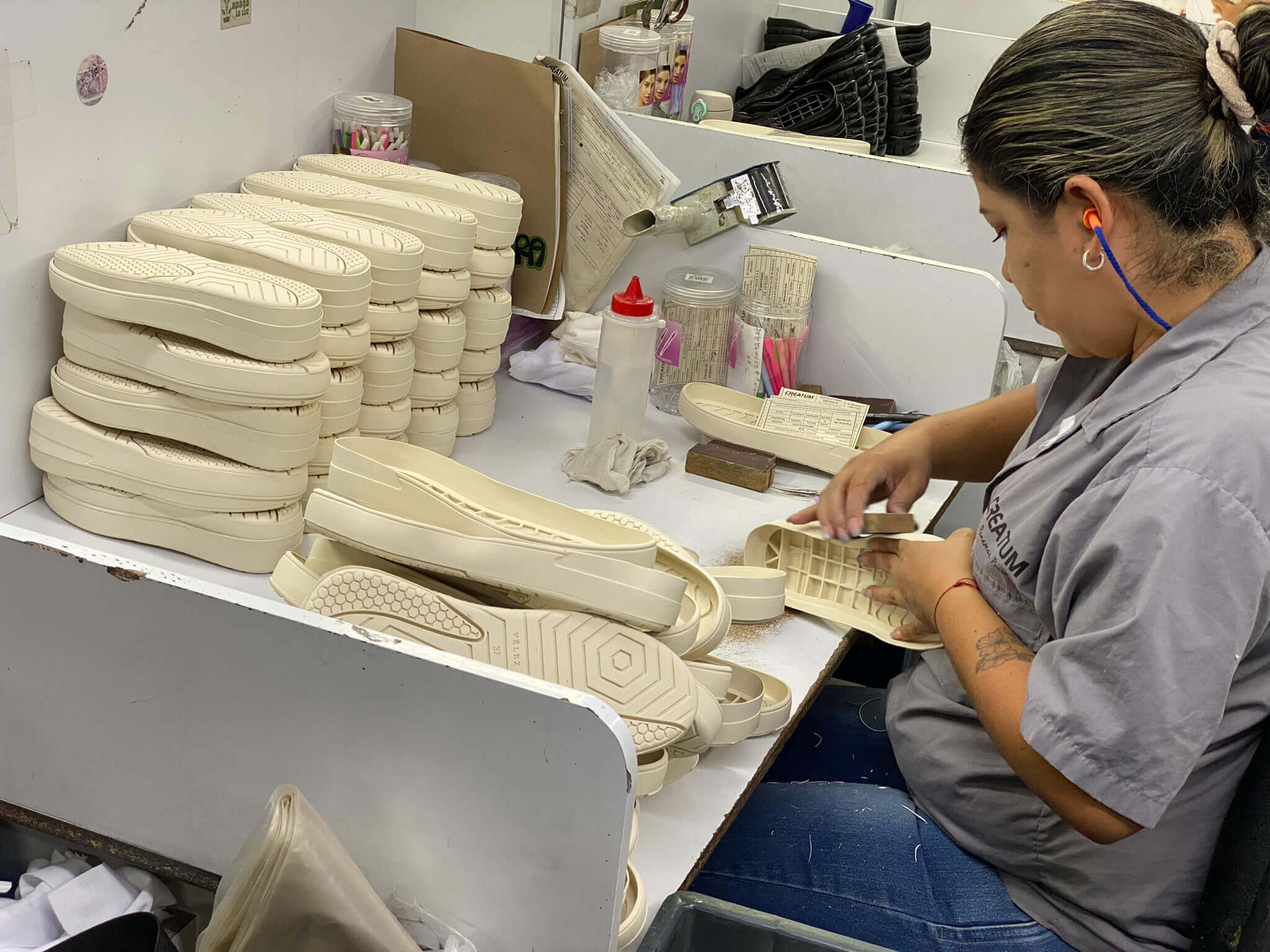
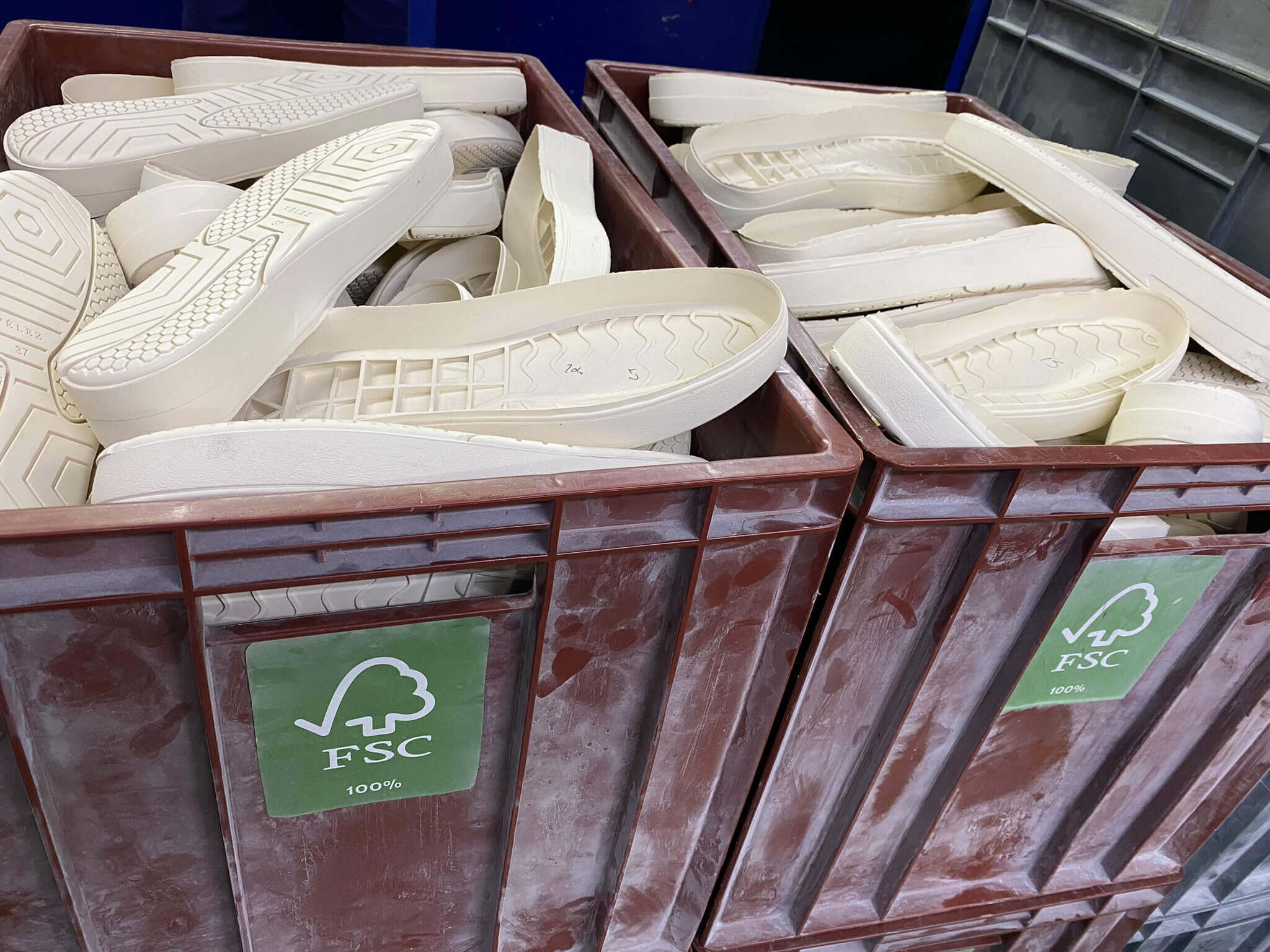
Sustainability Certification and Traceability
The soles produced from raw materials from AgriChains partners are certified with the FSC forest stewardship seal. The seal guarantees the traceability of sustainable raw materials and assures the end consumer that they do not come from regions where deforestation has taken place.
Certified Product Transfer with Chain of Custody Compliance
The soles are then sent to the company Cueros Vélez. The FSC Chain of Custody (COC) certification ensures that FSC-certified materials remain identifiable at all times.
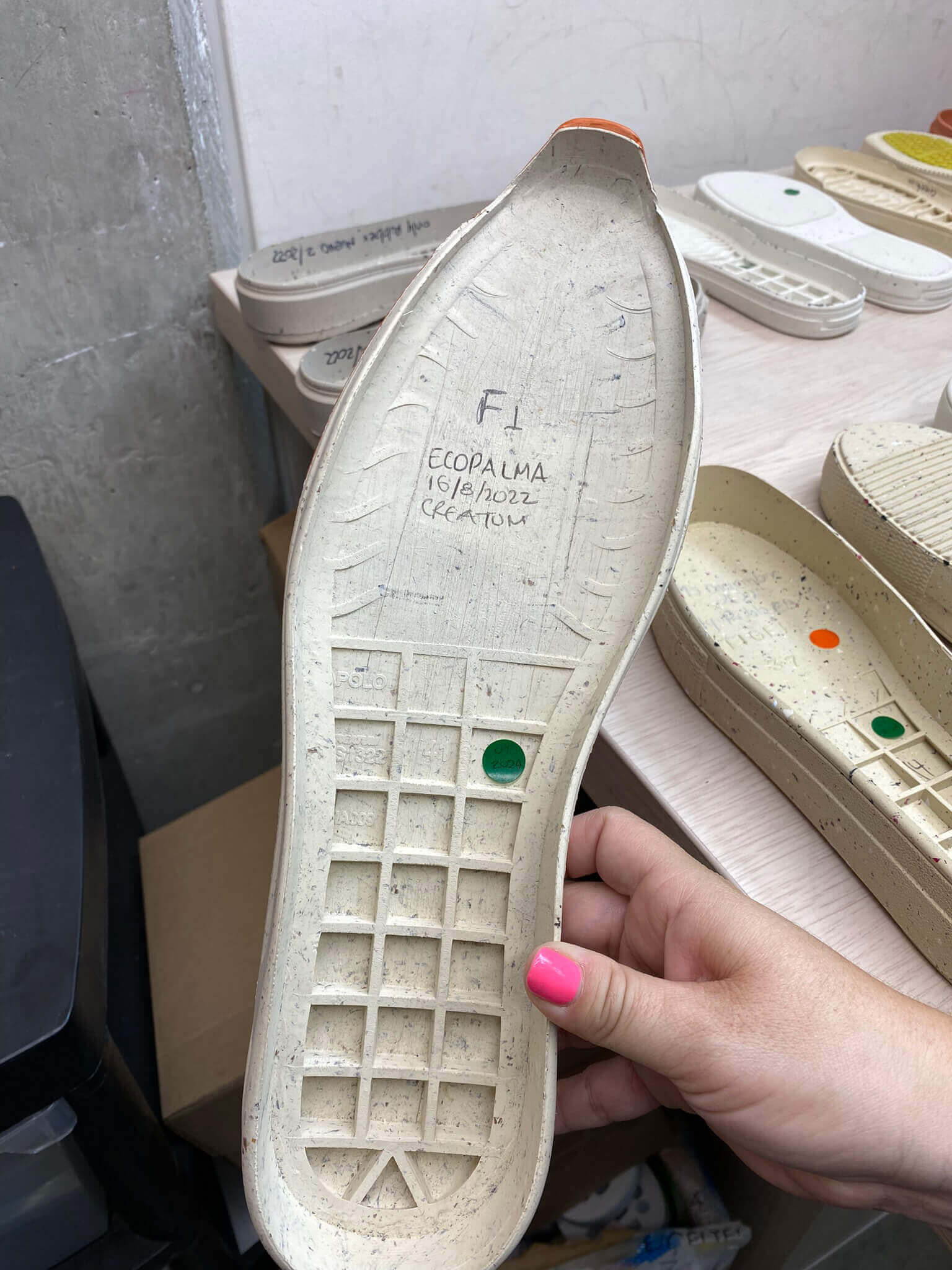
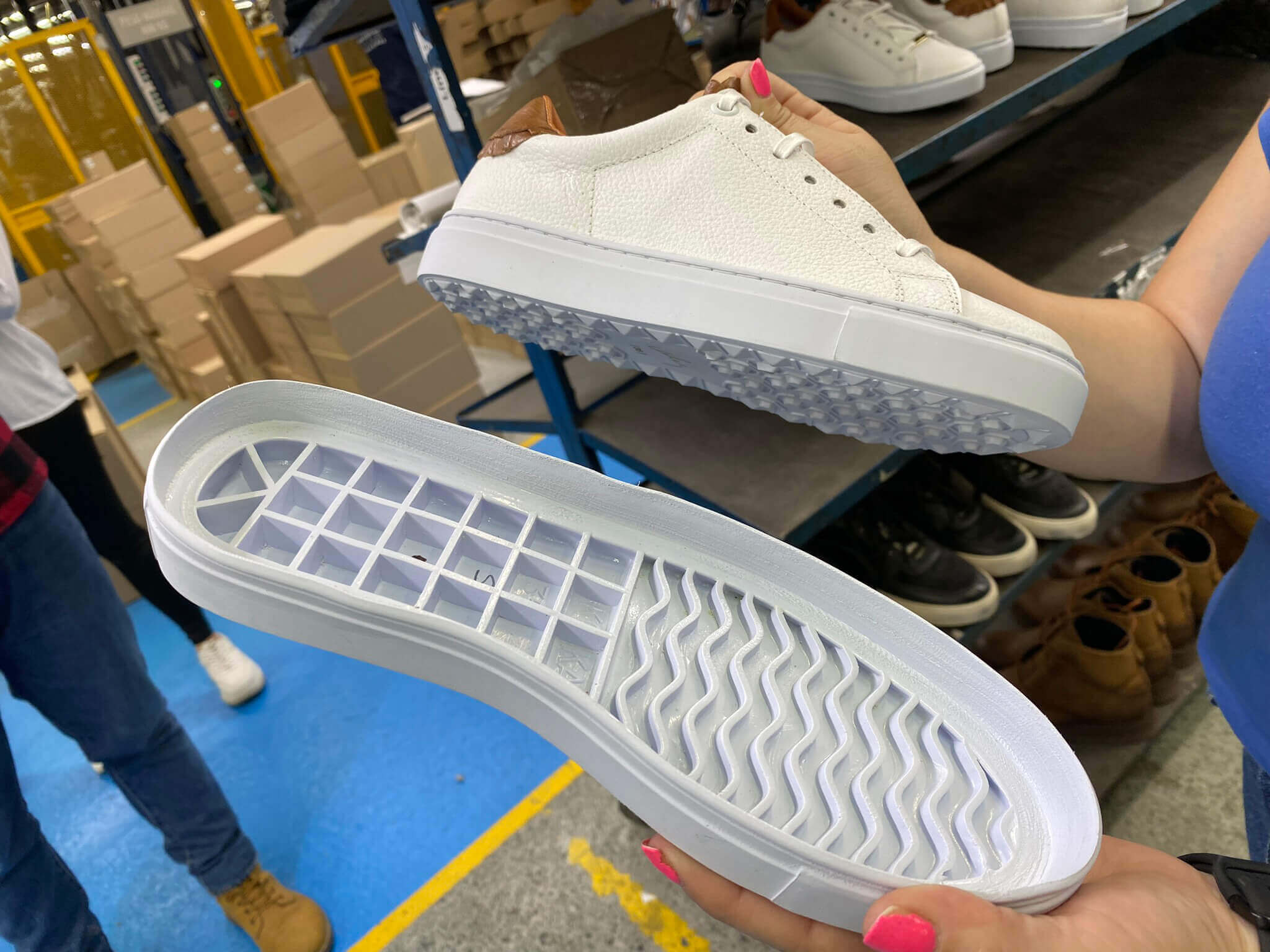
Final Assembly and Market Preparation
In the final processing step, the soles are attached to the shoes in an "artisanal process", which are also made from sustainable materials. The finished product can then be delivered to shops. Vélez shoes are sold on the Colombian and Latin American markets. The company is also planning to expand into the European market.
About the Documentation
The documentation of this process was done in Colombia as part of the global programme AgriChains by Deutsche Gesellschaft für Internationale Zusammenarbeit (GIZ), which in Colombia operates under the name of INCAS Global+ (Innovation in Sustainable Agricultural Supply Chains). Read more about the programme.
The images were taken in 2024 under the direction of Carlos Castellanos (GIZ Colombia), Wilmar Bahamon (GIZ Colombia) and the agency Rulo Brothers. The website design and texts were realised by Carlos Castellanos and Yvonne Bielfeld (both GIZ).